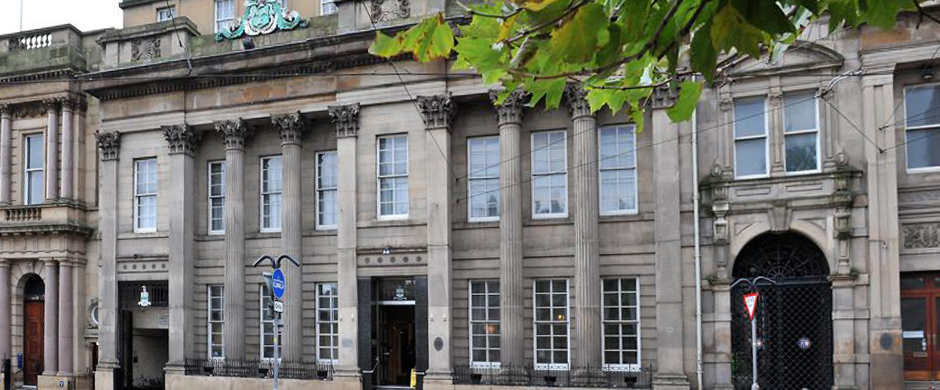
We were told that we were in for a surprise but nothing could have prepared us for what we saw and experienced. It was tremendous and if you look at the gallery you will see photographs of some of the rooms and what they contained. We were very fortunate because we not only saw the public rooms and chambers but also the private rooms.
We met at about 10:15 to 10:30 am for coffee in a reception room on the first floor and our tour began at 11:00 am. We were split into two groups of twelve to fifteen which meant that we could all hear what our guides were saying.
There have been three Cutlers’ Halls built on the same sight: the first being built in 1638 but was found to be inadequate and this was replaced by a larger building in 1725. Again this was replaced by a new building in 1832 at a cost of £6500.00 which was then extended between 1865 and 1867.The front of the Hall is deceiving because as you enter it is like going into a Tardis: it seems to go on for ever as you go through various rooms, almost extending to Fargate. The oldest rooms which contain the original banqueting hall are to the rear of the complex.
The Cutlers’ coat of arms can be seen everywhere within the building with the motto, “Pour y parvenier a bonne foi.”, which translated means, “To succeed through good faith.” Various depictions of elephants are also abundant although in some cases it is quite evident that the artist had never seen one.
The old banqueting hall is to the rear of the building and has a magnificent skylight: it also has a concealed door which I found fascinating. In the main hall, used for very grand events in the city, including entertaining royalty, there are plates on the walls showing all the Master Cutlers from 1624 to the present day. There are also several plates of benefactors and founders. Flags of all nations ( possibly of the Empire ) used to hang from the walls in this hall but they have been taken down for health and safety reasons. When I queried this I was told that they harbored dust and bacteria which could fall on the guests eating bellow.
Each year from 1648, apart from interruptions by the World Wars the Master Cutler has held ‘The Cutlers Feast’, a very grand event. Sometimes the ladies have joined the gentlemen, but more often than not they have had their own feast in the Hadfield Hall, which is situated below the Main Hall, although it was strenuously pointed out that this would be the decision of the Mistress Cutler. The ladies would then go upstairs to the ‘Ladies Gallery’ to listen to the speeches, although latterly they have watched and listened to them on monitors in the Hadfield Hall.
The walls in all the rooms are decorated with portraits of Master Cutlers’, famous places, and famous people. Some rooms and corridors contain display cabinets of edge tools consisting of pen knives, scissors, snuffers and cutlery, including the Norfolk Knife which was manufactured by Joseph Rodgers and Sons at there works on Norfolk Street for the Great Exhibition in 1851.
Our tour ended with a visit to the private chambers of the Master Cutler and also the chambers of the Mistress Cutler. This was certainly a visit which I am pleased that I didn’t miss.
